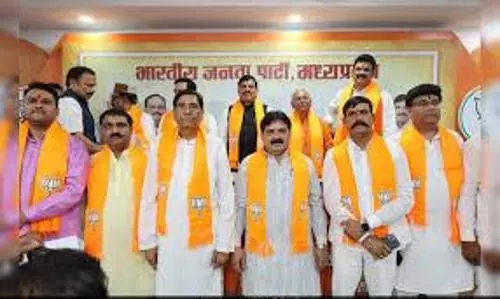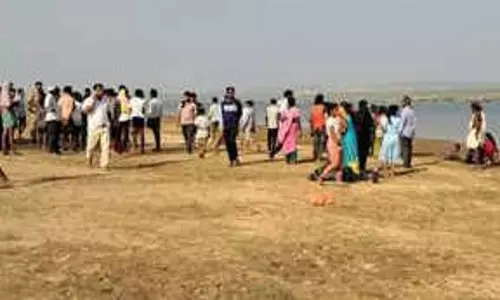
Kerala floods and environment debates
text_fieldsA flood for a second consecutive year in Kerala, and an intervening flood, have engendered an unprecedented level of environmental awareness, as vouched for by the discourse in mainstream and social media. The core of the debate is the question whether the two floods that took 600 lives between them, led to tens of thousands becoming homeless, and caused financial losses to the tune of crores, were man-made disasters rather than mere ‘natural calamity’.
One argument widely heard is that what caused the disaster is man’s interventions in nature in the name of development. Votaries of this contention say that the quarries along Western Ghats were the direct cause of the land slides that happened this year. On the other side, critics of such ‘environmental fundamentalists’ deny that quarries caused the land slides. There is also the theory that although quarries can become the cause of land slides, such natural disasters cannot be prevented merely by restricting quarries. It is encouraging that in the new circumstances environment protection is coming up as a political subject. But all these debaes also reveal the weakness of the philosophy of environmental politics existing in our land. That is why the entire brouhaha keeps revolving around the sole issue of Gadgil report.
It is a fact visible to every one that man’s interventions do cause natural disasters. This is underscored by studies about 20 major land slides that happened in Kerala over the last 40 years. These studies also say that the cause of the land slides in Kattippara in Kozhikode district and Makkimala in Wayanad district last year was the functionng of the check-dams in neighbouring areas. And a landslide that struck Kunjithanni in Idukki district five years ago, was the blocking of water flow coupled with unscientific construction activity there. Also, quarries were behind the land slide in Mupliyam in Thrissur district in 2005.
All the same, it cannot be said for certain that this was the only cause, especially when we consider the changes that happen in climate. As per figures of 3 August, the deficit in this year’s monsoon rains of Kerala was 34 per cent. Exactly a week later, the deficit came down to 8 per cent. Which means, districts of Wayanad, Malappuram and Kozhikode that were worst hit by the flood, received increased rainfall by 54 per cent. Put otherwise, rainfall expected in a span of 70 days, happened in just seven days. Reasons for this literal cloud blast have to be searched for, not in western ghats but in Arabian Sea. Metereological department informs that a weak El Nino in the first week of June and the change of direction of south-western wind, were the causes of the phenomenon repeating this year. They also warn that the same has to be expected for next year too. The southwestern monsoon that we have been receiving was strong in the first two months and relatively weak in the following days.
Figures of rainfall make it clear that this pattern changed since 2002. The major change here is not in the volume of rain, but in its geographic distribution. And the first to be affected by this is the sources of water. And that is behind the phenomenon of floods being followed by drought. That being so, in addition to the exploitation of Western Ghats, other factors will also have to be considered. Also to be considered primarily are the changes happening to the blue planet. These changes by no means happened by themselves. Man’s avaricious hands have played a role there too. Against such exploitation, there is a green politics evolving at a global level. The pertinent question is to what extent enligtened Kerala has joined ranks in this new politics which is committed to transferring to the next generation the entire organic planet with all its uniqueness.
Recent events have convinced the world that global warming and climate change are not mere fiction. It is a new reality of this century that following uncontrolled rise in sea level, many land patches are disappearing. It is in recognition of this danger that countries like Britain and Canada declared ‘climate emergency’. The goal of the ‘emergency’ is to bring down the level of hazardous greenhouse gases to zero by 2025. Conservation of natural resources and their scientific use are part of this. When a left-wing government came to power in Denmark, the first declaration it made was a similar ‘emergency’.
It is to be noted that the people who come out in protest demanding similar emergency in these countries are all students – such is the extent to which the green politics has influenced those populations. We may have to be termed far behind in this respect, because climate change has not become a topic of much discussion so far in our political narrative. It is a paradox that a people, who have imparted thousands of lessons of humanity and compassion in scenes of disaster, have not been able to create a ‘Kerala model’ in this matter. All the same, it is only through a new ‘Kerala model’ that we can recapture our land and sea. And may the current ‘Gadgil debates’ lead to that.























